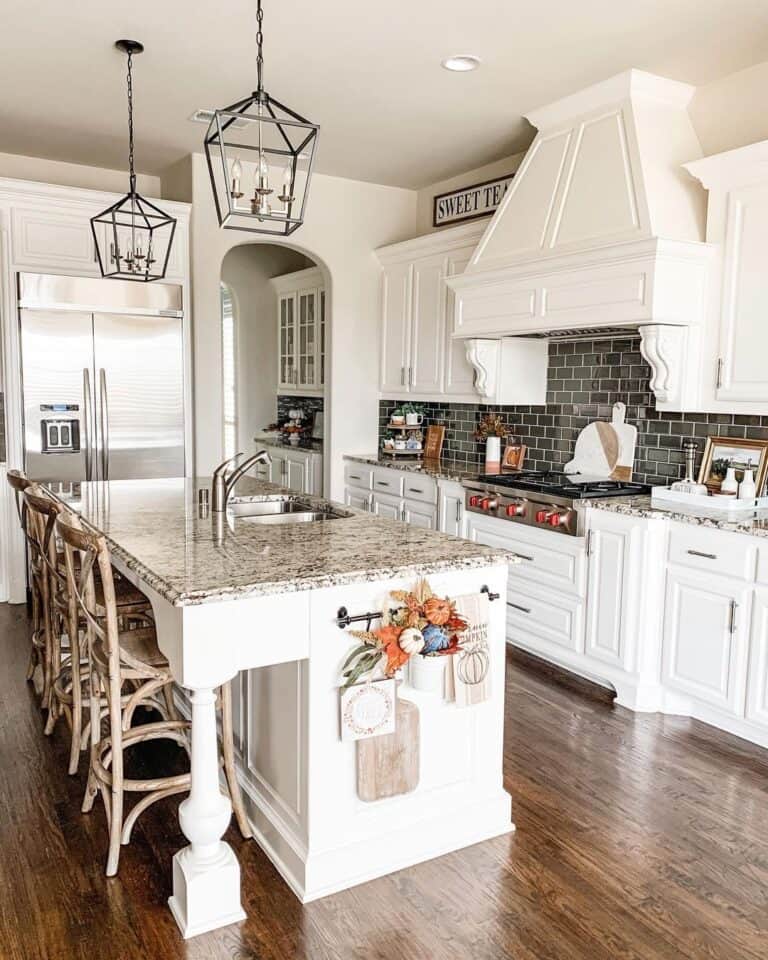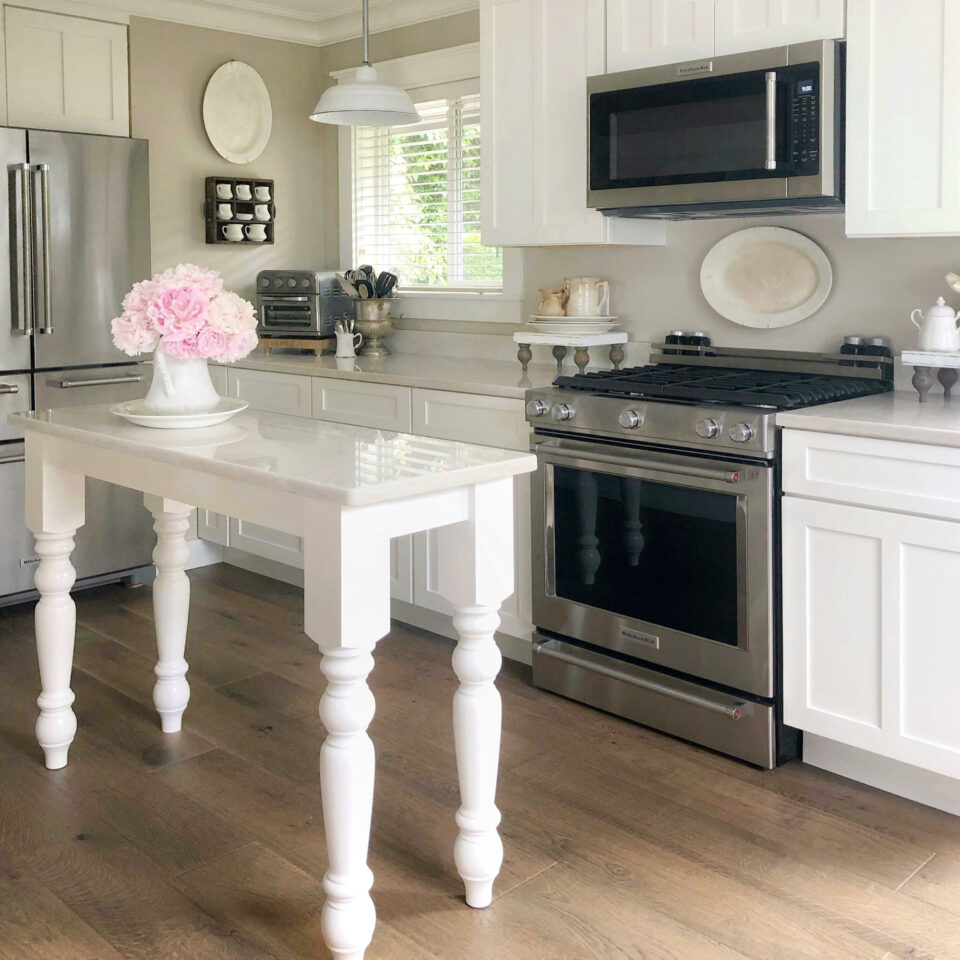Elegant Kitchen Island Legs: Raise Your Kitchen Layout
A Guide to Choosing the Suitable Cooking Area Island for Your Home
Picking the ideal cooking area island is a multi-faceted choice that can substantially influence both the functionality and aesthetics of your home. Comprehending your cooking area's spatial dynamics is the preliminary action, ensuring that the island fits seamlessly without interrupting the circulation. Past space factors to consider, recognizing the main function of the island-- be it for dish prep work, eating, or additional storage space-- is crucial. The selection of materials and coatings additionally plays a vital duty in integrating the island with your cooking area's total design. As we check out these aspects further, the subtleties of each choice will come to be clear.
Examining Your Area
Before selecting a kitchen area island, it is essential to thoroughly assess your space to ensure the addition will certainly be both useful and aesthetically pleasing. Begin by measuring the readily available area, consisting of the size, length, and elevation of the kitchen. Accurate dimensions are important to prevent buying an island that overwhelms the space or one that is overmuch little.
Think about the existing layout and how the island will incorporate with the current traffic circulation. A well-placed island must not hamper or obstruct pathways access to essential appliances, such as the refrigerator, stove, and sink. Leave adequate clearance area-- typically around 36 to 48 inches on all sides-- to permit comfy motion and work space efficiency.
Following, evaluate the natural light and sightlines within your cooking area. An island that blocks a window or disrupts aesthetic communication can make the area feel cramped and dark. Believe regarding how the island's positioning will certainly impact lights and exposure, ensuring it boosts instead of interferes with the cooking area's atmosphere.
Establishing the Function
Determining the objective of your kitchen area island is a critical action in ensuring it meets your specific demands and preferences. Before diving into layout or dimension considerations, it is vital to clarify what main function the island will certainly serve in your cooking area. Will it be a central center for meal prep work, a laid-back eating location, or possibly an additional storage space solution?
Furthermore, adequate counter room for chopping and mixing, along with available storage space for kitchen tools and active ingredients, can change the island into an efficient workstation. On the other hand, if the island is planned to promote social communications or serve as an eating area, seating plans come to be critical.

Selecting the Right Dimension
Picking the appropriate dimension for your kitchen island is a balance of performance and area optimization. An optimal kitchen island ought to provide enough workspace while making certain that motion around the cooking area remains unobstructed. Begin by gauging your cooking area space; a minimal clearance of 36 to 42 inches around the island is needed to enable for comfortable activity and availability.
The measurements of the island should reflect its designated usage. If the island will offer primarily as a prep area, a width of 24 to 36 inches might suffice.

Last but not least, guarantee that the island's size enhances the general cooking area format, preventing any overwhelming presence that may diminish the cooking area's visual and utility - kitchen island legs. Cautious planning and precise dimensions will certainly help you attain a unified and efficient kitchen area environment
Deciding On Materials and Finishes
After figuring out the proper size for your cooking area island, the following step involves choosing ideal materials and coatings. The choice of products significantly impacts both the visual appeal and performance of your kitchen area island. Popular materials for counter tops consist of butcher, granite, and quartz block, each offering distinct benefits.
Along with the kitchen counter, take into consideration the products for the space station. Strong timber provides a traditional, strong appearance, while stainless steel gives a sleek, contemporary appearance and is very easy to tidy. Painted finishes can introduce a sprinkle of shade, with options varying from low-key pastels to vibrant, vibrant hues.
Pay focus to the sturdiness of surfaces, specifically in high-traffic areas, to preserve the island's look over time. Selecting the appropriate products and finishes will enhance both the performance and aesthetic appeal of your kitchen island.
Including Functional Features
Incorporating functional functions right into your kitchen island can dramatically improve its energy and visit the site ease, transforming it right into a versatile focal point of your cooking area. One vital function to consider is added storage space. Integrating closets, cabinets, and open shelving can supply much-needed room for cookware, tools, and little appliances, helping to maintain a clutter-free atmosphere.
Another important addition is an integrated sink or cooktop, which can enhance meal prep work and clean-up processes. A sink can facilitate jobs such as cleaning vegetables Home Page and cleaning meals, while a cooktop can enable for cooking directly on the island, promoting a more interactive and social food preparation experience.
Think about incorporating seating choices, especially if your kitchen area increases as an informal dining area. Bar stools or integrated benches can transform the island into a multifunctional area for dishes, homework, or informal celebrations.
Last but not least, integrating electric outlets into your cooking area island can improve its practicality. Outlets supply convenient access for little cooking area devices, billing terminals for digital tools, and additional illumination options.
Final Thought

Prior to choosing a kitchen area island, it is necessary to extensively analyze your room to make certain the addition will be both useful and aesthetically pleasing.Choosing the right dimension for your cooking area island is an equilibrium of performance and room hop over to these guys optimization. kitchen island legs. A suitable kitchen island ought to supply sufficient workspace while making sure that motion around the cooking area stays unobstructed.Integrating functional attributes into your cooking area island can substantially improve its energy and convenience, transforming it into a functional focal point of your kitchen area.In verdict, picking the suitable cooking area island demands a detailed assessment of the available space, clarity concerning its main feature, and cautious factor to consider of the suitable size and products